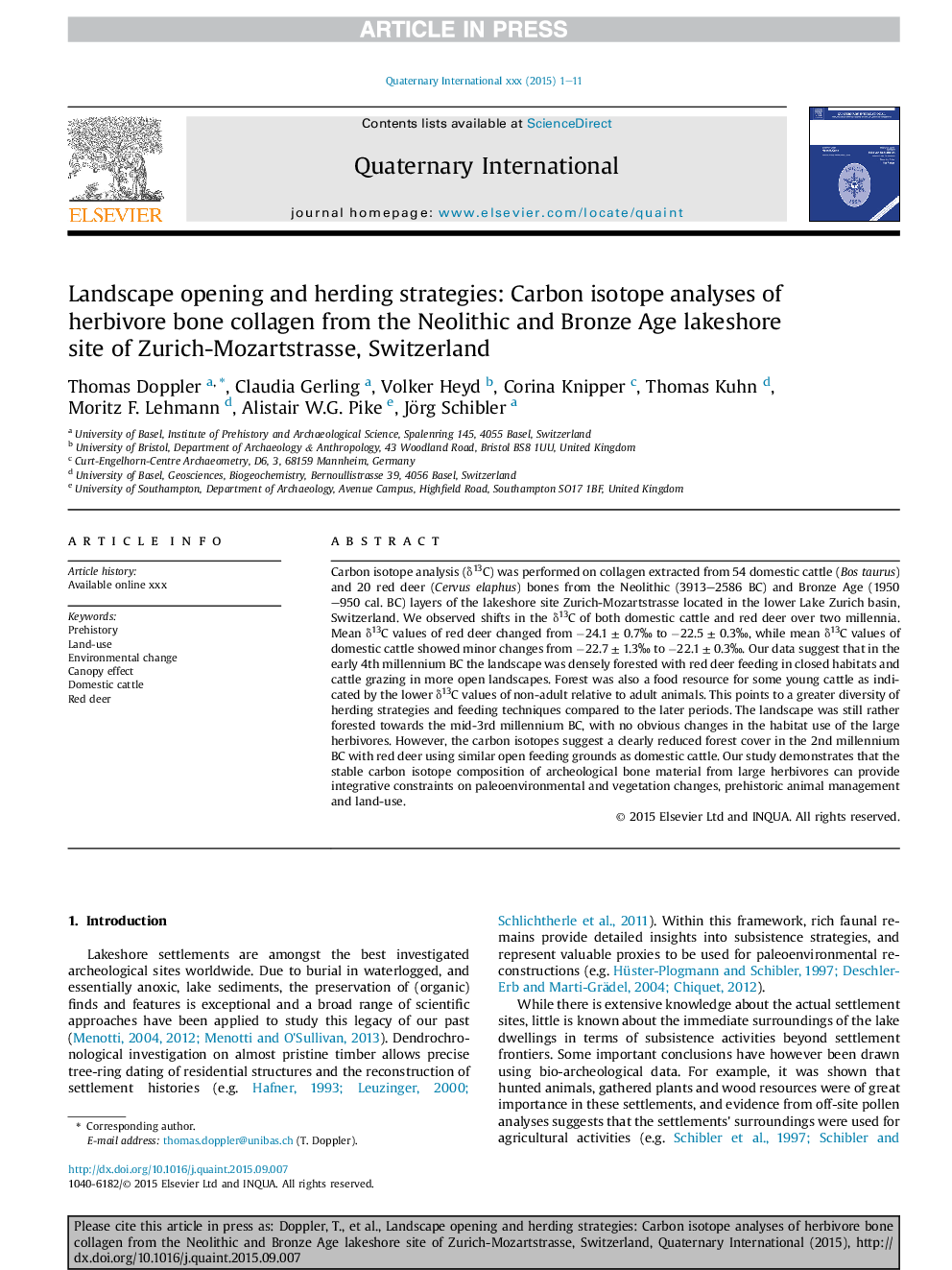| Article ID | Journal | Published Year | Pages | File Type |
|---|---|---|---|---|
| 5113459 | Quaternary International | 2017 | 11 Pages |
Abstract
Carbon isotope analysis (δ13C) was performed on collagen extracted from 54 domestic cattle (Bos taurus) and 20 red deer (Cervus elaphus) bones from the Neolithic (3913-2586 BC) and Bronze Age (1950-950 cal. BC) layers of the lakeshore site Zurich-Mozartstrasse located in the lower Lake Zurich basin, Switzerland. We observed shifts in the δ13C of both domestic cattle and red deer over two millennia. Mean δ13C values of red deer changed from â24.1 ± 0.7â° to â22.5 ± 0.3â°, while mean δ13C values of domestic cattle showed minor changes from â22.7 ± 1.3â° to â22.1 ± 0.3â°. Our data suggest that in the early 4th millennium BC the landscape was densely forested with red deer feeding in closed habitats and cattle grazing in more open landscapes. Forest was also a food resource for some young cattle as indicated by the lower δ13C values of non-adult relative to adult animals. This points to a greater diversity of herding strategies and feeding techniques compared to the later periods. The landscape was still rather forested towards the mid-3rd millennium BC, with no obvious changes in the habitat use of the large herbivores. However, the carbon isotopes suggest a clearly reduced forest cover in the 2nd millennium BC with red deer using similar open feeding grounds as domestic cattle. Our study demonstrates that the stable carbon isotope composition of archeological bone material from large herbivores can provide integrative constraints on paleoenvironmental and vegetation changes, prehistoric animal management and land-use.
Related Topics
Physical Sciences and Engineering
Earth and Planetary Sciences
Geology
Authors
Thomas Doppler, Claudia Gerling, Volker Heyd, Corina Knipper, Thomas Kuhn, Moritz F. Lehmann, Alistair W.G. Pike, Jörg Schibler,
